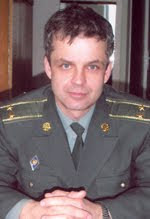Location: Northern Europe, between Finland and Norway
Government type: constitutional monarchy.
Head of government: prime-minister John Fredrik Reinfeldt
Population: 9 million
Capital: Stockholm
GDP (purchasing power parity): $354.7 billion
GDP - per capita (PPP): $39,100
Swedish globally known businesses:
Ericsson, Electrolux, and IKEA, Volvo, Scania, Tetra Pak, H&M.
Ukraine-Sweden bilateral relations:
Yaroslav the Wise, a prominent Kyivan Rus prince in 11th century, married Ingegerd, a Swedish princess, whose relics are kept today in St. Sofia’s Cathedral in Kyiv.
Ukraine has a small community of ethnic Swedes that live in a village in Kherson oblast since the 18th century.
Kyiv is just a two-hour flight from Stockholm.
Over 100 companies with Swedish capital are registered in Ukraine.
Most known Swedish businesses in Ukraine: Ericsson, Chumak, Oriflame, SEB Bank, Swedbank, Tetra Pak, Skania, SKF.
IKEA, world’s biggest furniture retailer, abandoned investment plans in Ukraine in 2011, allegedly due to unfriendly business environment.
Swedish investment: $1.8 billion
Investment areas: financial sector, manufacture of home appliances, processing of food and agricultural products, packaging, metalworking and engineering goods.
Bilateral trade: $560 million in 2010, Swedish exports comprise 80 percent.
Swedish exports to Ukraine: telecommunications equipment, medical instruments, passenger cars, trucks and buses, manufacturing machinery, heating & cooling, paper and board semi-manufactures.
(Sources: CIS World Fact book, Swedish Trade Council, embassy of Sweden in Ukraine)










